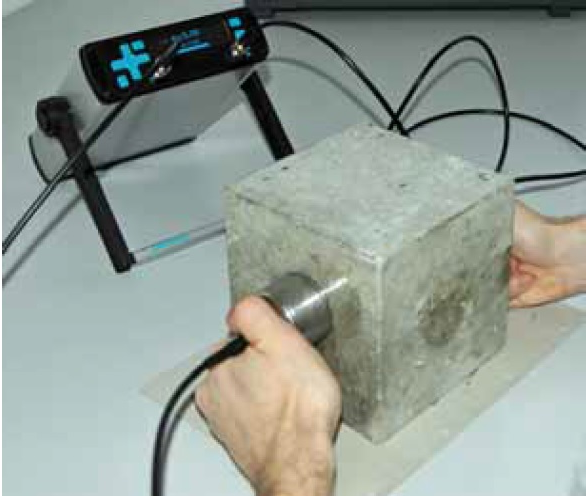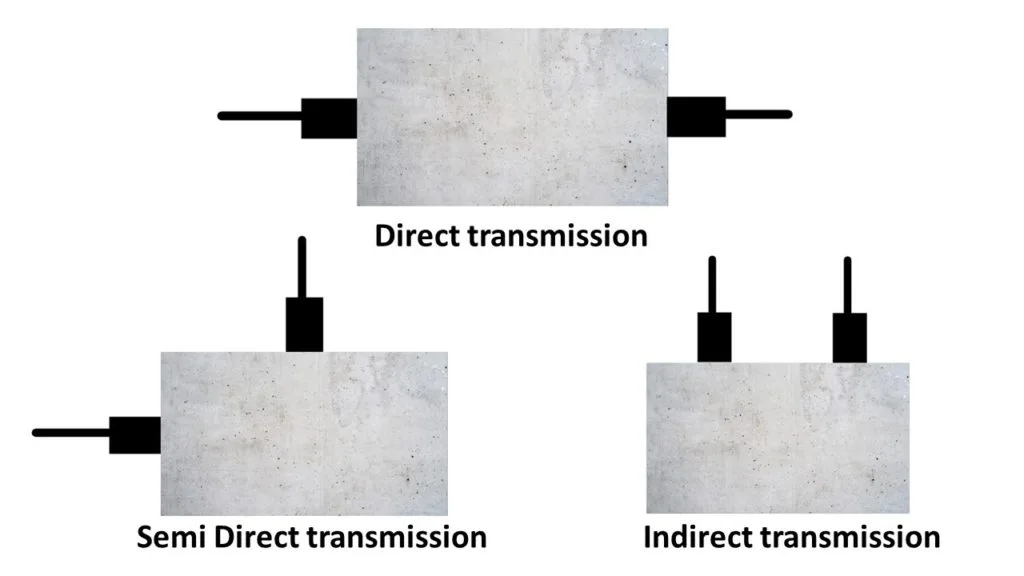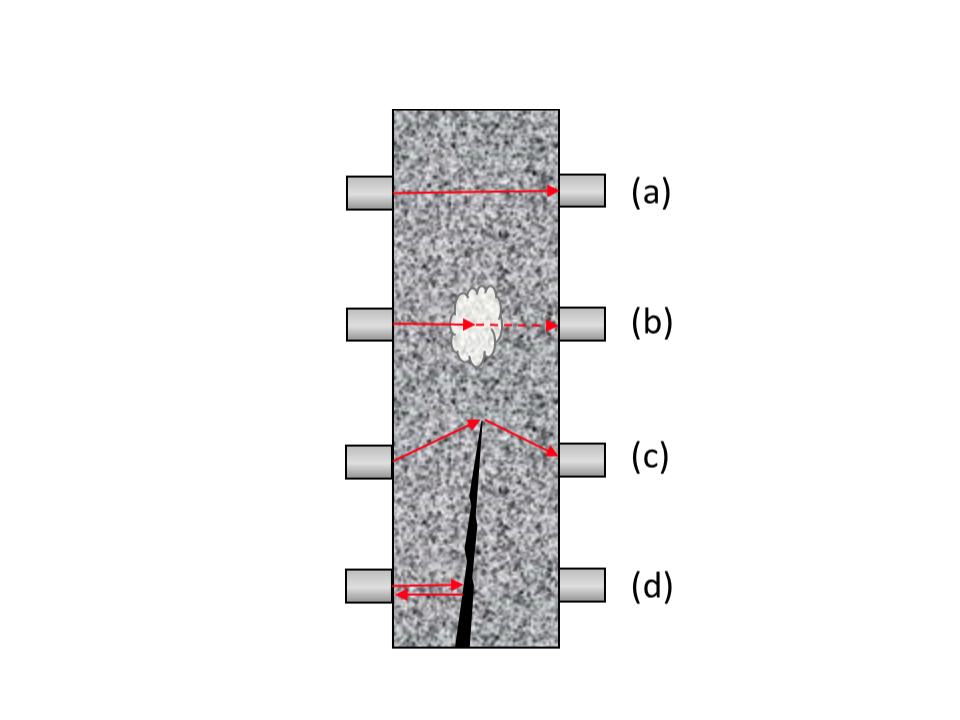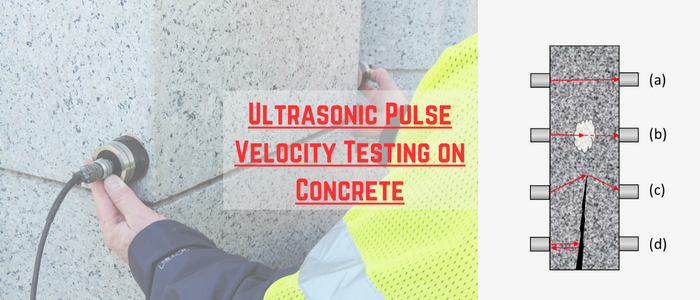What is Ultrasonic Pulse Velocity Testing?
Ultrasonic Pulse Velocity (UPV) is an efficient non-destructive testing (NDT) technique for ensuring concrete material quality and identifying structural component damage. Traditionally, the UPV techniques have been employed for material quality control, primarily for homogeneous materials like metals and welded joints.
The test is now commonly used to assess concrete materials because to recent advancements in transducer technology. Concrete ultrasonic testing is a useful technique for crack depth measurement, quality assessment, and uniformity.
The test procedure has been standardized as the “Standard Test Method for Pulse Velocity through Concrete”.
What Is the Process of Ultrasonic Pulse Velocity?
Two transducers—one sending and one receiving—connected to a pulse generator and data recorder make up a typical Ultrasonic Pulse Velocity (UPV) apparatus.

The Idea Behind Ultrasonic Pulse velocity:
The idea behind the technique is to measure the time it takes for acoustic waves to flow through a material and relate that information to the density and elastic characteristics of the material.
The travel time of ultrasonic waves reflects the internal condition of the test area.
Higher travel times are typically indicative of low-quality concrete with more abnormalities and inadequacies for a given test path, whereas shorter transit times are associated with high-quality concrete with fewer anomalies.
The ultrasonic wave is reflected in the boundary of anomalies as it propagates throughout the test region, lengthening the signal’s transit time.
To conduct a UPV test, many transducer setups can be utilized. This covers surface-level indirect transmission as well as direct and semi-direct transmission.
Next figure illustrates several transducer configurations according to test area surface access.

The transducer configurations determine the signal travel trajectory, which in turn affects the ultrasonic velocity.
The impact of concrete deficiencies and anomalies on the corresponding velocity and the acoustic wave travel time along a certain trajectory is depicted next.

Concrete-Transducer contact – Bonding Agent:
The air pocket between the transducer and the concrete could cause measurement inaccuracy if the UPV transducers are not fully in contact with the surface of the concrete (i.e. erroneous measurement of transit time).
One explanation for this is because when there is inadequate contact, very little wave energy will be transferred.
To ensure maximum contact and remove any air pockets, a variety of bonding agents can be employed, such as kaolin-glycerol paste, petroleum jelly, grease, and liquid soap. It is advised to create the thinnest possible couplant layer.
Applications of UPV for Concrete:
The Ultrasonic Pulse Velocity (UPV) test is a useful tool for evaluating many concrete properties. When used in conjunction with a rebound hammer, it can be used to evaluate the strength and consistency of the concrete as well as its overall quality. The main ways that the UPV approach is used to evaluate concrete constructions are outlined in the following.
- Assess the overall Concrete Quality
- Assess the Concrete’s Uniformity and Homogeneity
- Surface Crack Depth Measurement.
4- Concrete In-Place Estimate.
UPV – Influencing Parameters:
Concrete surfaces must be dust-free and clean in order to perform accurate ultrasonic testing on them. The essential elements for carrying out a trustworthy UPV measurement in the field are outlined below.
- To create the best possible connection between concrete and UPV transducers, an appropriate bonding agent is required.
- Impact of Steel Rebar: Because metal has a substantially faster wave travel speed than concrete, steel rebar in concrete requires special care. It can be challenging to interpret test findings in extensively reinforced concrete.
- UPV Configuration: Although the direct configuration is the best for obtaining accurate readings, it is mostly used with concrete specimens in the laboratory.
Interpretation of Results
Classification of concrete quality ratings based on UPV test BS 1881: Part 203
| Pulse velocity (km/s) |
Concrete quality (ratings) |
| ≥ 4.5 | Excellent (E) |
| 3.5 – 4.5 | Good (G) |
| 3.0 – 3.5 | Medium (M) |
| 2.0 – 3.0 | Doubtful (D) |
| ≤ 2.0 | Very weak (VW) |
Read Also:
